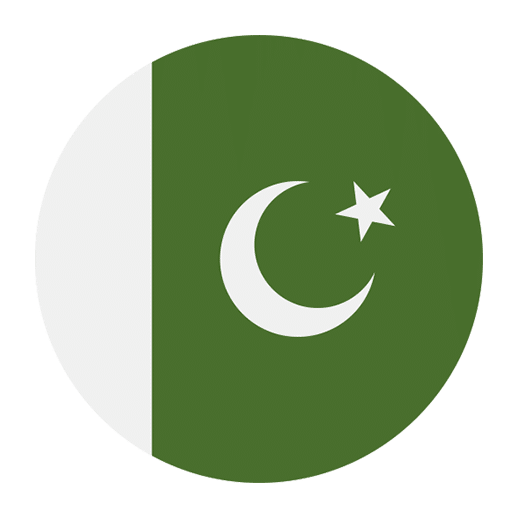Learning a new language often involves diving deep into the cultural and historical contexts of the regions where that language is spoken. Urdu, the national language of Pakistan and widely spoken in India, offers a rich tapestry of expressions, idioms, and words that describe historical periods. Whether you are a history buff or a language enthusiast, understanding Urdu vocabulary related to historical periods can significantly enhance your fluency and appreciation for the language.
Understanding Historical Terms in Urdu
One of the fascinating aspects of Urdu is its ability to capture the essence of different historical periods through its vocabulary. Many of these terms have roots in Persian, Arabic, and Sanskrit, reflecting the rich and diverse history of South Asia. Below, we’ll explore some essential Urdu words and phrases that describe various historical periods and contexts.
Ancient History
1. **قدیم** (Qadeem): This word means ancient or old. It is often used to describe historical artifacts, civilizations, and texts. For example, **قدیم تہذیب** (Qadeem Tehzeeb) refers to an ancient civilization.
2. **عہدِ قدیم** (Ahad-e-Qadeem): This term refers to the ancient era. It is a compound word where “عہد” (Ahad) means era or period, and “قدیم” (Qadeem) means ancient.
3. **آثارِ قدیمہ** (Aasaar-e-Qadeema): This phrase translates to ancient ruins or archaeological remains. “آثار” (Aasaar) means ruins or remnants, and “قدیمہ” (Qadeema) is the feminine form of ancient.
Medieval History
1. **وسطی عہد** (Wasti Ahad): This term means the medieval period. “وسطی” (Wasti) means middle or medieval, and “عہد” (Ahad) means era.
2. **سلطنت** (Saltanat): Refers to a sultanate or kingdom, often used to describe various Islamic empires during the medieval period.
3. **مغل** (Mughal): This word refers to the Mughal Empire, a significant historical period in South Asia. For example, **مغل دور** (Mughal Daur) means the Mughal era.
4. **عہدِ وسطیٰ** (Ahad-e-Wasti): This term also refers to the medieval era, similar to “وسطی عہد” (Wasti Ahad).
Colonial Period
1. **نوآبادیاتی دور** (Nawaabadiyaati Daur): This phrase means the colonial period. “نوآبادیاتی” (Nawaabadiyaati) comes from “نوآبادی” (Nawaabadi), meaning colony, and “دور” (Daur) means era.
2. **برطانوی راج** (Bartaanwi Raaj): This term refers to the British Raj, the period of British rule in India. “برطانوی” (Bartaanwi) means British, and “راج” (Raaj) means rule.
3. **غلامی** (Ghulaami): This word means slavery or subjugation and is often used to describe the oppressive conditions under colonial rule.
Modern History
1. **جدید دور** (Jadeed Daur): This phrase means the modern era. “جدید” (Jadeed) means modern or contemporary, and “دور” (Daur) means era.
2. **آزادی** (Azaadi): This term means freedom or independence. It is often used in the context of the independence movements in South Asia.
3. **تحریک** (Tehreek): This word means movement and is often used to describe various socio-political movements. For example, **تحریکِ آزادی** (Tehreek-e-Azaadi) means the freedom movement.
Describing Historical Events
Understanding how to describe historical events in Urdu can further enrich your vocabulary. Here are some useful terms and phrases:
1. **واقعہ** (Waqia): This word means event or incident. It can be used to describe both historical and contemporary events.
2. **جنگ** (Jang): This term means war and is often used to describe significant historical conflicts. For example, **جنگِ آزادی** (Jang-e-Azaadi) refers to the war of independence.
3. **معرکہ** (Ma’araka): This word means battle and is often used in historical contexts. For example, **معرکۂ پانی پت** (Ma’araka-e-Pani Pat) refers to the Battle of Panipat.
4. **انقلاب** (Inqilaab): This term means revolution and is used to describe significant socio-political changes. For example, **انقلابِ فرانس** (Inqilaab-e-Farance) means the French Revolution.
Important Historical Figures
Discussing history often involves mentioning key figures. Here are some Urdu terms to describe important historical personalities:
1. **بادشاہ** (Badshah): This word means king or emperor. It is used to describe rulers from various historical periods.
2. **ملکہ** (Malika): This term means queen and is used to describe female rulers.
3. **سلطان** (Sultan): This word means sultan and is often used to describe rulers of Islamic empires.
4. **قائد** (Qaid): This term means leader and is often used to describe prominent political figures. For example, **قائد اعظم** (Qaid-e-Azam) refers to Muhammad Ali Jinnah, the founder of Pakistan.
5. **مجاہد** (Mujahid): This word means freedom fighter or warrior, often used to describe individuals who fought for independence.
Describing Historical Artifacts and Sites
Historical artifacts and sites are essential elements of history. Here are some Urdu words to describe them:
1. **یادگار** (Yaadgaar): This word means monument or memorial. It is used to describe structures built to commemorate significant events or figures.
2. **آثار** (Aasaar): This term means ruins or remnants and is often used in the context of archaeological sites.
3. **محل** (Mahal): This word means palace and is used to describe royal residences.
4. **مسجد** (Masjid): This term means mosque and is often used to describe historical religious sites.
5. **قلعہ** (Qila): This word means fort and is used to describe historical military structures.
Expressing Historical Concepts
Understanding historical concepts can also be crucial when discussing history in Urdu. Here are some terms that may be useful:
1. **تاریخ** (Tareekh): This word means history and is the foundation of discussing any historical topic.
2. **زمانہ** (Zamana): This term means era or age and is often used to describe different historical periods.
3. **عہد** (Ahad): This word also means era or period and is often used in compound words to describe specific historical times, such as **عہدِ مغلیہ** (Ahad-e-Mughliya) for the Mughal era.
4. **ثقافت** (Saqafat): This term means culture and is essential for discussing the cultural aspects of different historical periods.
5. **ورثہ** (Virsa): This word means heritage and is used to describe the cultural and historical legacy passed down through generations.
Using Historical Vocabulary in Sentences
To help you better understand how to use these words and phrases, here are some example sentences:
1. **قدیم تہذیبیں ہمیشہ سے تاریخ کا اہم حصہ رہی ہیں۔** (Qadeem Tehzeebein hamesha se tareekh ka eham hissa rahi hain.)
– Ancient civilizations have always been an important part of history.
2. **سلطنتِ مغلیہ نے ہندوستان پر کئی صدیوں تک حکمرانی کی۔** (Saltanat-e-Mughliya ne Hindustan par kai sadiyon tak hukmarani ki.)
– The Mughal Empire ruled India for several centuries.
3. **برطانوی راج کے دوران ہندوستان نے کئی اہم تبدیلیاں دیکھیں۔** (Bartaanwi Raaj ke doran Hindustan ne kai eham tabdiliyan dekhein.)
– During the British Raj, India witnessed many significant changes.
4. **پاکستان کی آزادی کا دن 14 اگست کو منایا جاتا ہے۔** (Pakistan ki azaadi ka din 14 August ko manaya jata hai.)
– Pakistan’s Independence Day is celebrated on August 14th.
5. **قلعہ لاہور پاکستان کا ایک مشہور تاریخی مقام ہے۔** (Qila Lahore Pakistan ka aik mashhoor tareekhi maqam hai.)
– The Lahore Fort is a famous historical site in Pakistan.
Conclusion
Expanding your Urdu vocabulary to include terms related to historical periods not only enriches your language skills but also deepens your understanding of South Asian history and culture. By learning these words and phrases, you can more effectively discuss and appreciate the rich historical tapestry of the Urdu-speaking world. Whether you are reading historical texts, visiting historical sites, or engaging in conversations about history, this vocabulary will undoubtedly prove invaluable. So, dive into the past with these Urdu terms and bring history to life in your language learning journey!

